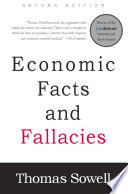

The Broken Window Fallacy illustrates a common misconception in economics: that destruction can lead to economic growth. The argument posits that when a window is broken, the money spent on repairs stimulates the economy. However, this overlooks the concept of opportunity cost. The money spent on fixing the window could have been used for other productive purposes, such as purchasing new shoes or investing in a business. Thus, the fallacy demonstrates that economic analysis should consider not only what is seen (the immediate repair) but also what is not seen (the lost opportunity). This idea emphasizes the importance of understanding the broader implications of economic activity and the necessity of evaluating the unseen consequences of actions.
Continue readingThe concept of a zero-sum game suggests that one party's gain is equivalent to another's loss. This idea is often applied in discussions about wealth distribution and economic resources. The author argues that this perspective is fundamentally flawed because economic growth can create new wealth. When economies expand, new opportunities arise, and wealth is not merely redistributed but can increase overall. This fallacy can hinder policy-making and public perception, as it leads to an adversarial view of economic interactions, where cooperation and innovation are overlooked. Understanding this concept is crucial for fostering an environment that encourages collaboration and economic growth.
Continue readingIncome inequality is frequently portrayed as a major societal problem, with the assumption that it leads to social unrest and economic instability. However, the book argues that inequality is not inherently negative and can even be a sign of a dynamic economy where individuals are rewarded for innovation and hard work. The author emphasizes that income mobility and access to opportunities are more critical indicators of economic health than static measures of inequality. This idea encourages readers to re-evaluate their perceptions of wealth distribution and consider the broader context of economic mobility and the factors contributing to inequality.
Continue readingUrbanization is often associated with increased poverty levels, leading to the belief that cities exacerbate economic hardships. However, the author counters this by presenting evidence that urbanization typically leads to improved living standards and economic opportunities. As people move to cities, they gain access to jobs, education, and services that can lift them out of poverty. This fallacy highlights the importance of understanding the relationship between urbanization and economic development, and how cities can serve as engines of growth rather than merely centers of poverty.
Continue readingA common belief is that government intervention is necessary for economic growth, particularly in developing nations. Yet, the author argues that excessive government control can stifle innovation and entrepreneurship. The book highlights instances where free markets have led to more efficient resource allocation and economic development than government-led initiatives. This idea challenges readers to consider the balance between regulation and free-market principles, advocating for a limited government role that fosters rather than hinders economic progress.
Continue readingThere is a prevalent belief that higher education directly correlates with economic success. However, the book discusses the fallacy that merely obtaining a degree guarantees financial stability. The author points out that the value of education is contingent on the relevance of the skills acquired and the individual's ability to apply them in the job market. This idea encourages critical thinking about the education system, urging readers to consider alternative paths to success that may not involve traditional educational routes.
Continue readingEconomic planning is often viewed as a necessary tool for managing economies, especially in times of crisis. However, the author argues that central planning can lead to inefficiencies and misallocation of resources. Historical examples illustrate how planned economies have struggled compared to market-driven economies. This idea serves as a cautionary tale about the limitations of human foresight and the complexity of economic systems, promoting the idea that decentralized decision-making often yields better outcomes.
Continue reading